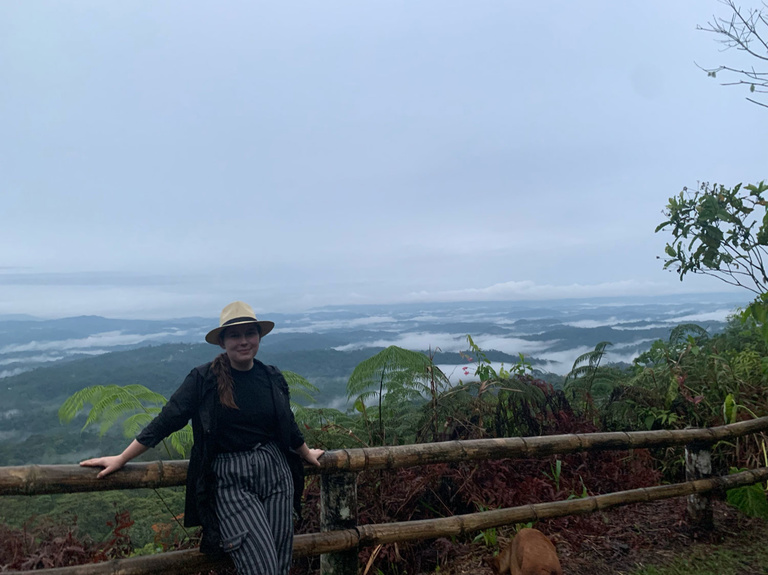
In the Amazon near Puyo at Sacha Warmi
In a matter of minutes, I’ve been in Ecuador for two months. In my last – and only letter, so far – I left off with the news that I would be in the Upper Amazon by the end of that week. For a few days, we stayed outside of the provincial capital of Puyo, visiting the organization Sacha Warmi (literally: “Forest Woman” in Quechua) led by Rosa, an indigenous woman of the Canelos nation, and her French husband Didier. Their property was once a vast, overworked pasture, and now it is a biodiverse haven where they educate people about ancestral medicine and indigenous culture, including traditional, handmade coil ceramic.
In the Amazon, we also went on a 4.5-hour hike to the nearby river. Unfortunately, we went downhill first! When we got to the river, we swam and relaxed before heading back. Then the real struggle started. All uphill, on damp wooden steps, we trekked. The group was divided into those who could push through and those of us mere mortals who needed to pace ourselves. My heart was beating out of my chest and the steep ravines near my feet made me even more nervous. By the end, my legs were on fire. When we got back to the lodge, I laid myself flat on the porch, proud to have made it.
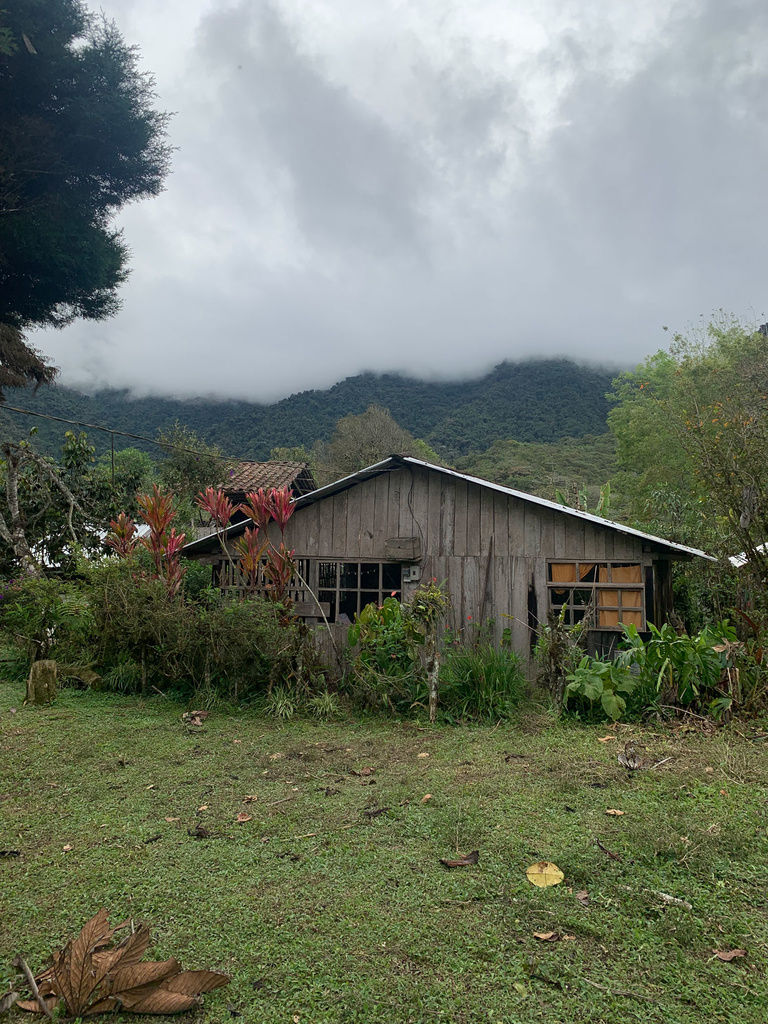
Don Sergio and Doña Mariana's home in the Intag Cloud Forest
One of the most memorable experiences, though, of the Amazon excursion was a blockade that occurred during our last couple of days in Puyo. The local communities, mostly indigenous, had demanded for decades better infrastructure, adequate, bilingual education, and health services to no avail. We had to walk through the demonstration to get to and from the Sacha Warmi organization. Upon returning, the highway was filled with supporters, with women on the front lines, and police. As we walked through with our director, who spoke Quechua, I felt intrusive. Who was I to walk through? Even though I held back judgment, not knowing enough about the situation to have an opinion, they did not know that. We took no photos. Our director was able to “donate” $25 to their cause so we could pass.
Our journey to the Galapagos was rough, to say the least. There is only one commercial airstrip within the archipelago, on the small island of Baltra, which used to be a US aircraft base during WWII. We then took a rough three-hour boat ride to the island of Floreana, which boasts a population of around 100. There we saw real pirate caves and the old cave-home of the Whittmer family, one of the first permanent residents on the Islands.
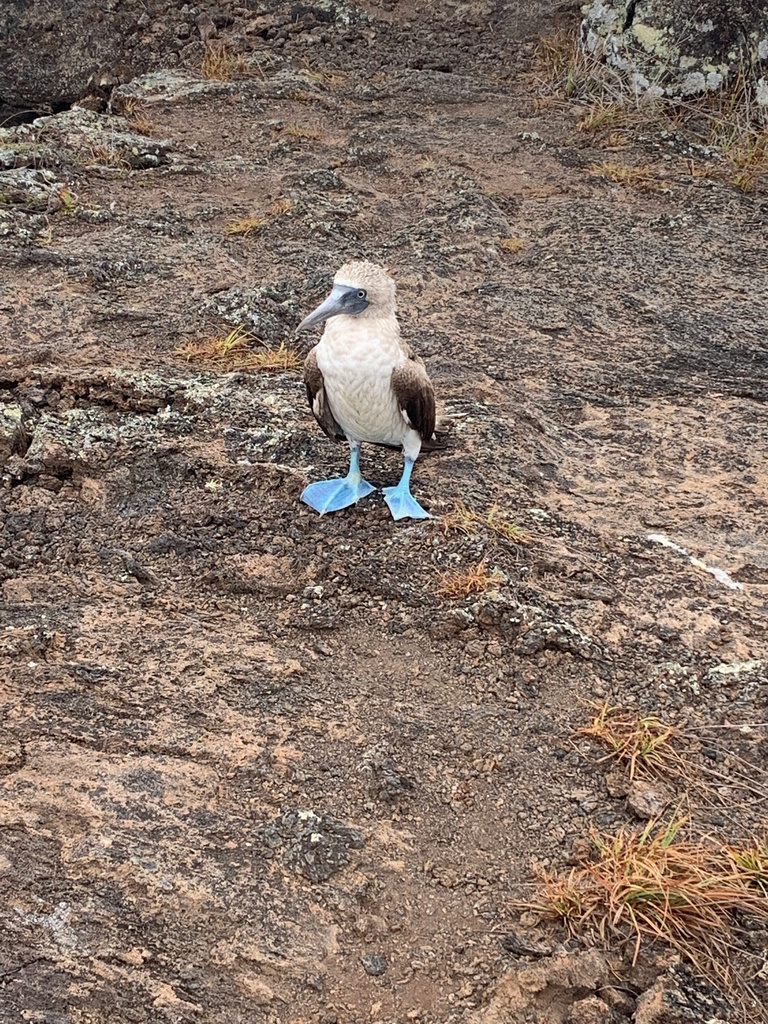
A Blue-Footed Booby in the Galapagos Islands
One important factor about the Galapagos Islands is the volume of tourists that visit every year. Barely any of the islands have freshwater springs, and if they do, they are limited and fragile. All freshwater is imported. There is a debate about tighter restrictions on the volume of people who can travel to the islands. During our stay, we discussed these proposed restrictions. For me, I understand. Much of tourism can leave a bad taste in your mouth when you really think about it. There are social, cultural, political, economic, and environmental impacts for better or worse when we travel. Through thoughtful, reflective discussions, we have explored our roles in the tourist industry. We are labelled “academic tourists” here, and even that can be explored deeper. Most of us think of ourselves as students and global citizens first, but to the majority, we are still participating in the tourist industry.
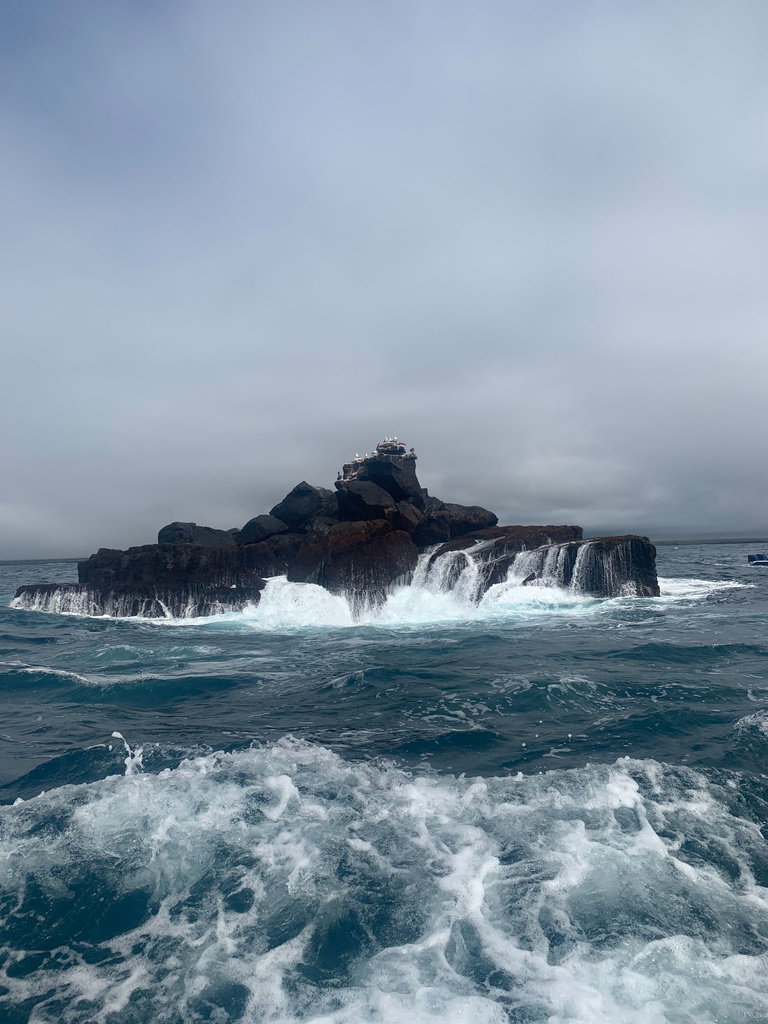
Near Isabela Island, Galapagos Islands
My friend and I enjoyed a day tour of the surrounding towns, Gualaceo and Chordeleg, which are just outside of the city of Cuenca. Our knowledgeable tour guide Luis Gonzalez, of Cañari descent, took us to the archeological site of Ingapirca, or “Inca Wall.” The excavation is only 30% completed (badly done by 19th-century European archeologists) but cannot be continued due to the lack of eminent domain in Ecuador; rightfully so, the farms that sit on top of the site provide livelihoods to its inhabitants and cannot be taken away. Ingapirca is a mixture of Inka and the earlier Cañari cultures, showing both venerations to the sun and the moon, respectively.

The Temple of the Sun at Ingapirca, near Cuenca
Our last excursion took us to the Intag Cloud Forest in the Imbabura region of Ecuador, northwest of Otavalo. We spent almost a week in this unique ecosystem, walking everywhere we went. We stayed between Don Carlos Soria’s finca, or farm, and host stay families. My host family was an older couple. For a little over two days, I stayed with them in their home with a view of the valley. Those few days allowed me the rare chance to simply be and reflect; there was no Internet or phone service in their home. Back on Don Carlos’ finca, we met his neighbor Wisconsin-born Sandra who works at raising crickets. We learned that 25 crickets can give someone more than their daily value of protein. As a powder, it is hardly noticeable, promising for underdeveloped children.
Now, I am in Saraguro, a small town in the southern Loja providence. Within the communities here, I am working with the collective Chaskiwarmikuna (“Women Messengers”) and the community schools that have an intercultural, bilingual – Spanish and Quechua – approach. I am also working with María Gabriela Albuja and her school which also takes an intercultural approach but teaches English as well as Quechua. Through my work, I will also explore how the ancient system of reciprocity called minka works within the communities to support these communities and alternative schools. There is so much to do, but I am excited to see where the research takes me and already am grateful to those in the community who have taken me in and worked with me.
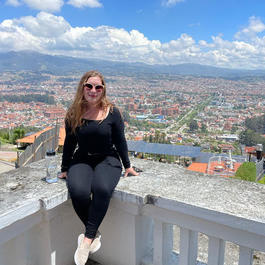
Looking over Cuenca from the Turi viewpoint
Whether I’m still in Ecuador or back home when I write my next and final letter, it will be important to share my work with those who I’ve worked with here, who will allow me to amplify their voices and their hopes, and with those who have helped me to make this program possible.
Kristin Vogel, a fourth-year University of Iowa student from Huxley, Iowa, spent the fall 2021 semester studying in Ecuador with SIT Study Abroad.
Posts by student correspondents may not reflect the opinions and recommendations of UI Study Abroad and International Programs. These communications are intended to give students a forum for free expression of thoughts and experiences abroad in a respectful space.